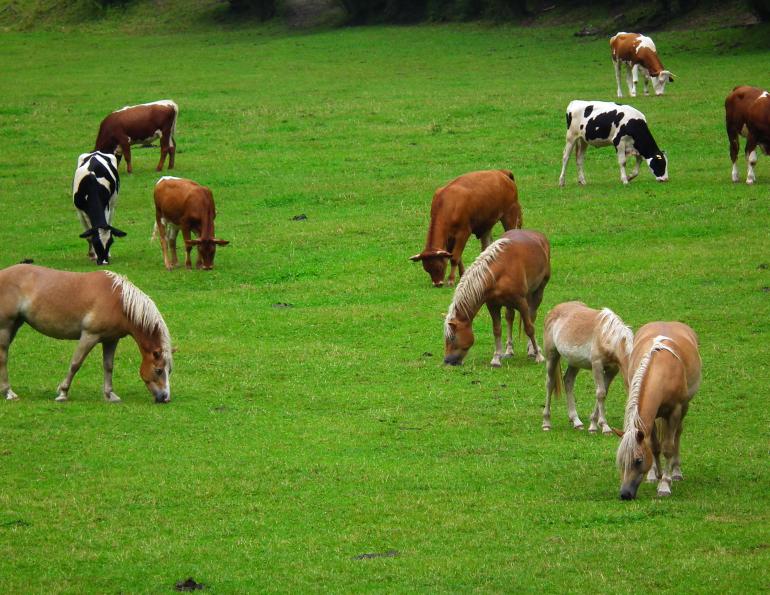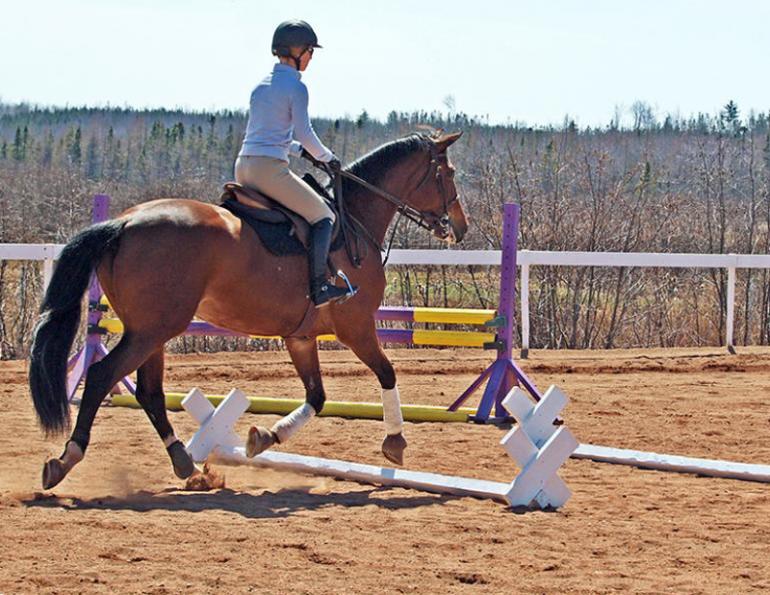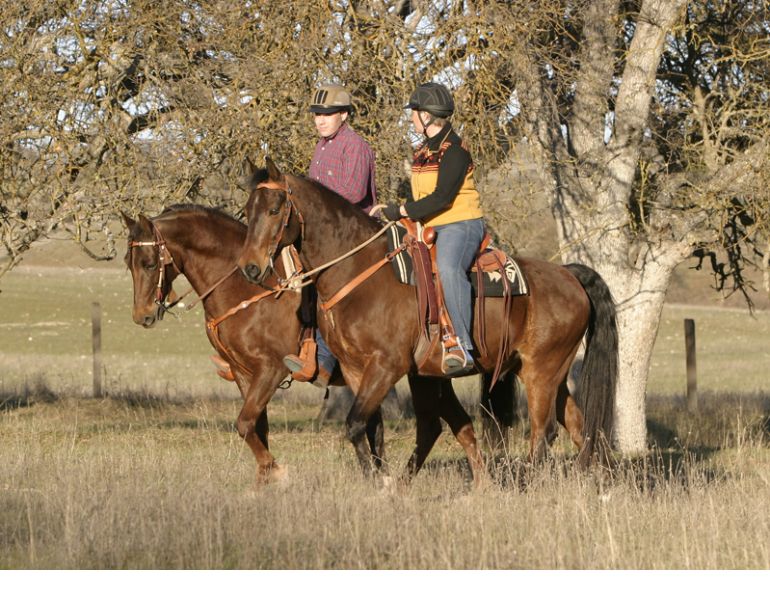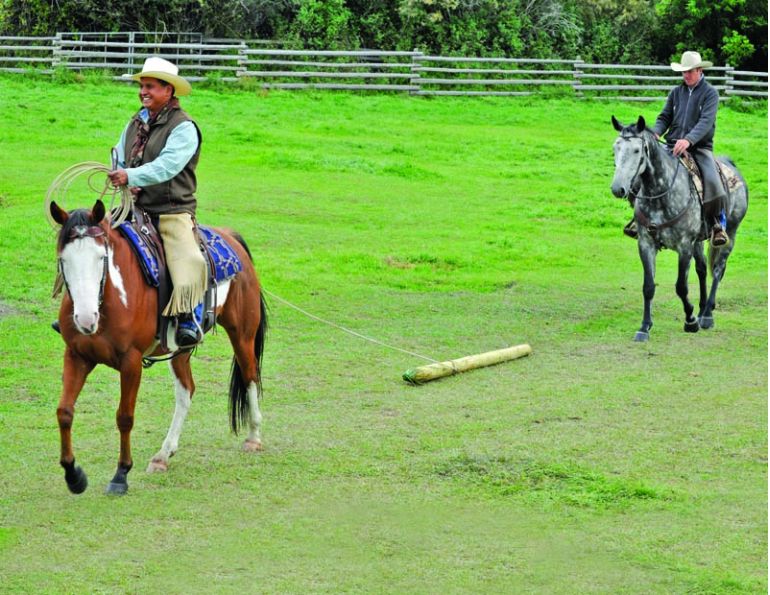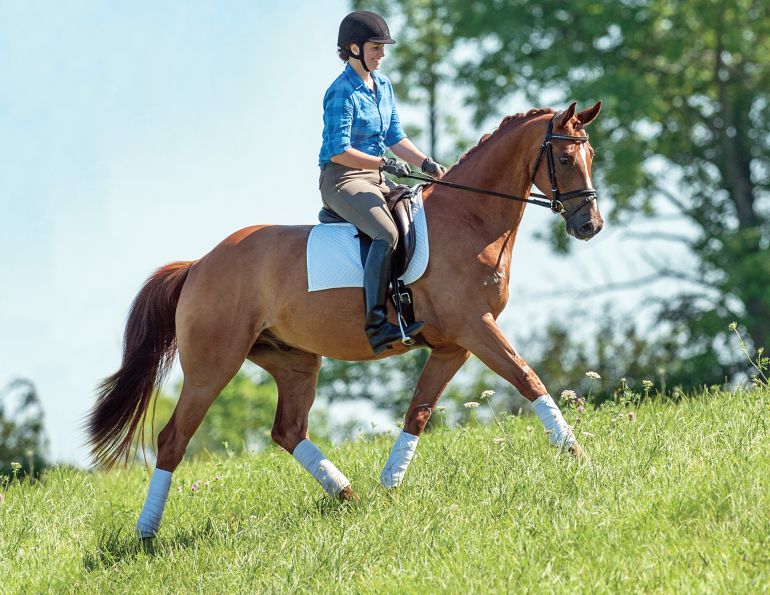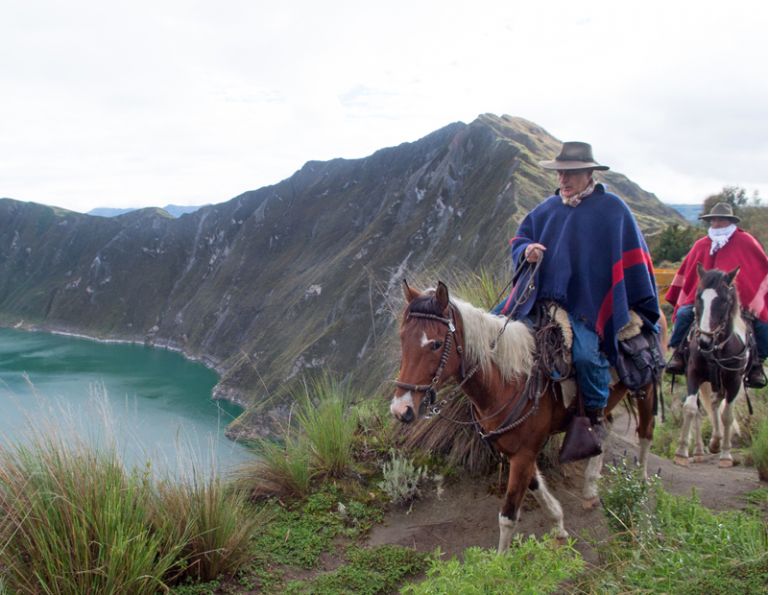By Stan Walchuk, Jr.
If mules are so wonderful, why do most people ride horses? If even half the heralded testimony from mule owners is true, we should all be riding mules. But wait… how gallant would Roy Rogers and the Lone Ranger have looked perched atop mules?
Certainly mules have limitations. The Kentucky Derby will never be a mule race. Despite the title of this article, do not feel pressured to make a decision between horses and mules, as there are pros and cons to each.
I have been in the business for years, have had three mules in my string, and traded lead ropes with many mule owners, but still I cannot decide which way to swing my loop. It’s a good thing I’m not a mule expert, or by the end of this article you would all be convinced that they look better than Brad Pitt and would be well on your way to forming a local chess club for mule lovers only.
Let’s examine some of the attributes of the mule, and some similarities and differences between mules and horses. A mule is a cross between a male donkey and a female horse. A donkey has 22 chromosomes, a horse has 24, and a mule has 23, which makes it a hybrid which cannot breed, although in 1984 there was a female mule that gave birth to two foals when bred to a donkey. Male mules should be gelded as they will try, albeit unsuccessfully, to breed with mares.
A mule has a larger head than a horse, like a donkey, and its unmistakeable ears can measure 33 inches from base to tip. Some mules are extremely sensitive when it comes to being handled about the ears, a trait that led to the development of a special bridle called a mule bonnet which can be strapped on without touching the ears. This should be your first warning as to the unique disposition of the mule; for all of their endearing qualities, if a mule does not want a certain part of its body to be handled (for example, the feet), or doesn’t want to be handled a certain way, or by a certain person, convincing it otherwise may be difficult, even impossible.
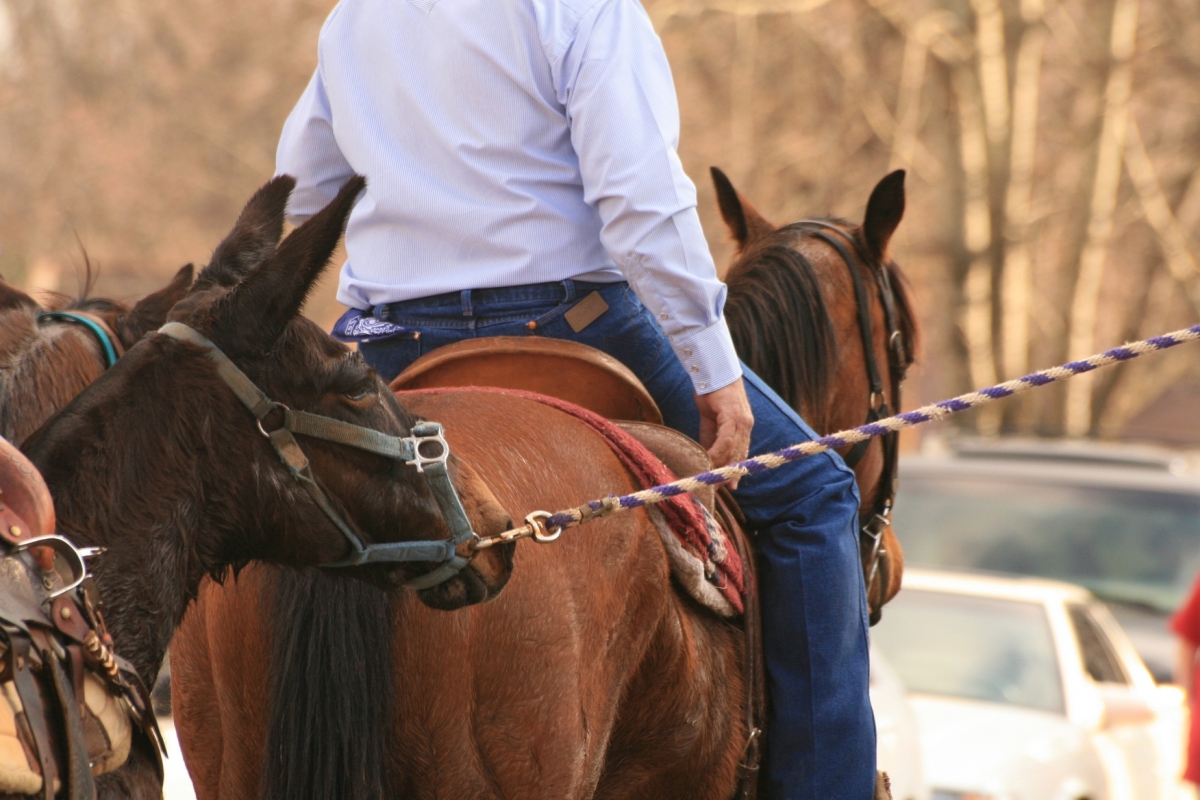
When comparing mules to horses, mules typically have more body weight over the front, good withers, a deep chest, and thicker, tough-walled feet. They are intelligent, and better at navigating difficult terrain and narrow trails than the average horse. With their long ears and bucket head, the mule is considered by some to be positively adorable.
A mule is built differently from a horse. It has more body weight over the front, typically good withers, and often a deep but not overly wide chest. Mules usually have thicker, tough walled, concave feet, a very desirable trait in a mule or a horse. With careful, intelligent minds, mules are better at picking their way over difficult terrain and narrow trails than your average horse.
Because of the toughness of their feet and legs, mules suffer fewer soundness problems, a big plus with trail riders. I have asked veterinarians if one horse breed typically has more foot and leg problems than other breeds and I have been told that Quarter Horses and Thoroughbreds lead all equines in that category. This should not be surprising considering that they are the performance athletes of the horse world in many disciplines, and years of breeding for desired qualities has left the durability of the foot somewhat lacking. If trail riding is your primary activity and your horse has been beset with foot and leg problems, there is hope; in fact, you can turn over a new leaf in your trail riding life by owning and riding a mule or a horse with feet and legs as tough as nails.
It is a fact that hybrid organisms often surpass their parents when it comes to certain qualities. For example, mules are known to be more intelligent and hardier than horses. They find warm climates comfortable and can work in heat that horses would find intolerable. On average they live longer than horses; a mule working into its thirties is not uncommon. Mules can pull and carry greater loads compared to their body weight than most horses, all the while needing less feed than a horse.
I will suggest that a cross between an average or small sized male donkey and a finer boned, leaner mare will often produce a lean mule that may never put on the weight that most horse owners are comfortable with.
By comparison, a mammoth jack (male) donkey and a draft mare will often produce a solid bodied and large boned mule that will be a great trail animal. These draft cross mules are desirable in the north where bogs and bush prevail. The famous Missouri Mules, which were used by the thousands in America’s westward mule train push in the 1800s, were nothing more than a cross between a mammoth jack and a draft mare.
Along with greater intelligence, the mule comes with a longer memory and a capacity to be strong minded, even what you might call stubborn. Bystanders may interpret their disposition as being even worse upon hearing your expletives when your mule refuses to do something.
You can usually convince a trail horse to complete a task in a pinch, say, cross a wooden bridge or stream, or dig in and scramble up or down a steep boulder-strewn mountainside.
But if a mule refuses and will not tell you why – maybe it is just too tired and wants to rest, or feels the task is too dangerous – you may find its stubbornness insurmountable. If your treatment of the mule is harsh during these difficult moments, it will likely save the memory of the injustice and unleash its retribution at a later time. I am told that the mule’s memory is a filing cabinet to be reopened in an instant. You treat one badly and it will never forget. Mules do not turn the other cheek very well and forgiveness is not one of their virtues.
One example of mule payback is the tale of a farrier who roughly slapped a mule with the flat of his hammer. A few years later he was shoeing that same mule, turned his back, and was viciously kicked into the feed bin.
However, payback stories are few and far between, so I am not yet buying into the notion of a vindictive nature which stores hateful memories to be later unleashed upon the perpetrator. I think it is more likely that a mule will be unfairly branded as difficult or stubborn because of an owner or trainer who does not have the training ability and patience to work with an animal as intelligent and unforgiving as the mule.
My friend Bob Silverthorne, of Alberta’s High Country Guides School, a long time mule owner, commented that a trainer needs about 15 years with horses before attempting to train a mule. The idea has merit as there can be a mountain of difference between the calm forgiving nature of horses like our Fjord crosses, and a sensitive mule with a long memory.
Mules develop affectionate bonds with owners who treat them well, and many owners have a collection of mule stories about their faithful, reliable friends. Photo: Robin Duncan Photography
While a mule’s memory may be superior to that of a horse, so too is the depth of the lasting bonds a mule will form with an owner who treats them well. Mules are capable of developing deep affection for their owners, and mule owners have an endless library of faithful, reliable, mule stories.
One such story is of a lady who was sitting on her porch enjoying the fine evening. A short distance from her house was a large corral and barn where her mule, Horace, had free run of the area. Suddenly and unexpectedly, Horace came busting out of the barn bucking and rousting about in a great panic. Concerned with the strange behaviour the lady walked down to the corral. When she looked back, smoke was pouring from the rear of the house – it was on fire! Unfortunately, the house could not be saved but she was convinced that the point of Horace’s behaviour was to relay the impending danger.
Mules are famous for their reliability, trustworthiness, and dedication to the job. When the season is over and you are at home sitting in your comfy chair, the best packhorse, dude horse, or mule you can have is one that does not bring to mind any negative events related to it. Your reliable trail partner was simply unobtrusive, doing its job day in and day out, giving weeks, months, and years of admirable service. Now there’s a trail horse or mule you can respect and love.
Many land owners also like having a mule or a donkey around because of their extreme dislike for predators, such as fox, coyote, cougar, or bear.
With so many endearing qualities it is no wonder that many are mule-struck to the point where they actually believe a mule is attractive. Take a second look; they are kind of cute, with their ten-inch ears, bucket head, and all. And they can be exemplary trail partners. So why are they not more common on the trail? Well, their popularity as trail mounts has been increasing for years and continues to grow, but they still have a hill to climb. Some riders just cannot get past the way they look, while others think of mules as third world beasts of burden. Combine this with the fact that a mule may not be the best choice for many performance disciplines, and the mule is placed on something less than higher ground in the eyes of many.
The surefootedness of the mule is put to the test on the trails of the Grand Canyon, a vast chasm of hoodoos and pillars, muted, distant, with the haze of heat, red and brown hues beyond, and far below the muddy twine of the Colorado River and the faint green patch of the Ghost Ranch. You need the experience of walking down the trails of the Grand Canyon to truly appreciate the incredible reliability of the mule. I did and it was a terrifying experience to walk down on my own feet; I could not have imagined riding a horse down. But surefooted mules carry riders along these splendid trails on a daily basis.
So what is my excuse? I have not excluded the mule deliberately. Where I come from, a good trail mule is about twice the price of a good trail horse and harder to come by. We began raising and training our own line of Morgan, Fjord, draft cross horses years ago and are content with the decision, but I can say with conviction that we would have no qualms about breeding mules. It was George Washington who imported the first mule to North America in 1785 and began the first mule breeding program, and if it was good enough for George Washington, it’s good enough for me.
Notwithstanding, there is something about the nobility of the horse and the heroic acts I have witnessed over the years when stuck in remote and difficult places where no man or beast should be, in situations the wilderness sometimes throws at us. There is something about that heart, spirit, drive, bravado, and willing mind of a horse that pushes through, over, and beyond to another campfire and another day.
I am not saying that a good trail mule cannot do what a good trail horse can; I am just not sure it would be done in the same way. Cheers to those that love their mules and cheers to those that love their horses.
Happy Trails!
Read more by Stan Walchuk on this site.
Main photo: A mule is a cross between a male donkey and a female horse. Mules are hybrids and cannot breed.



